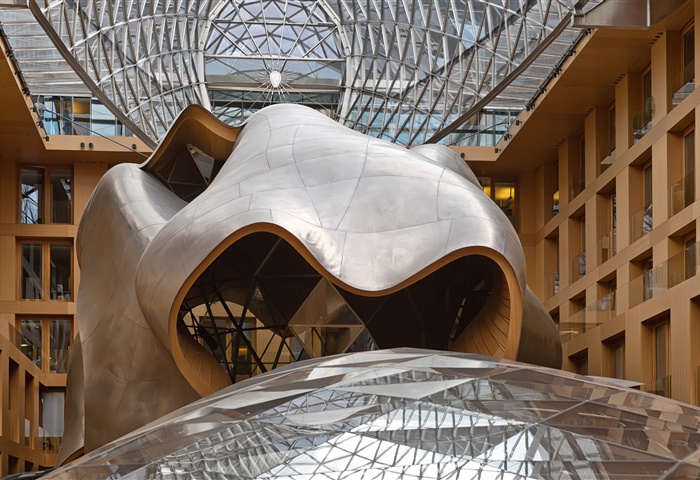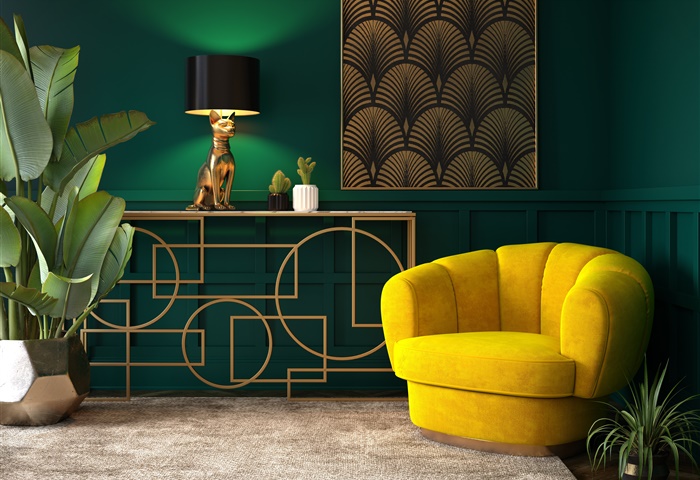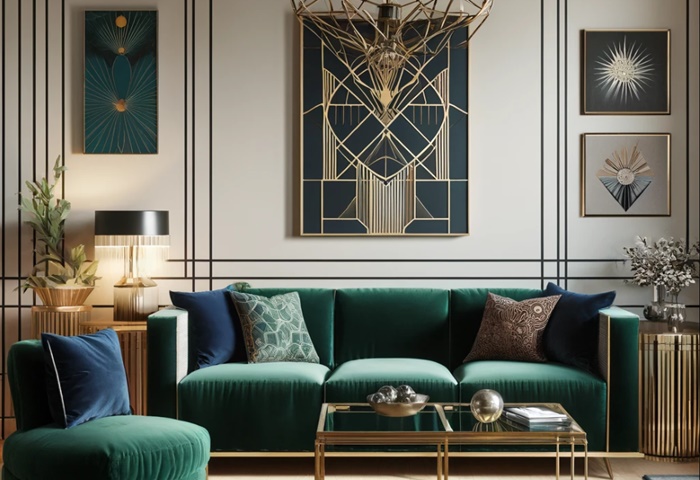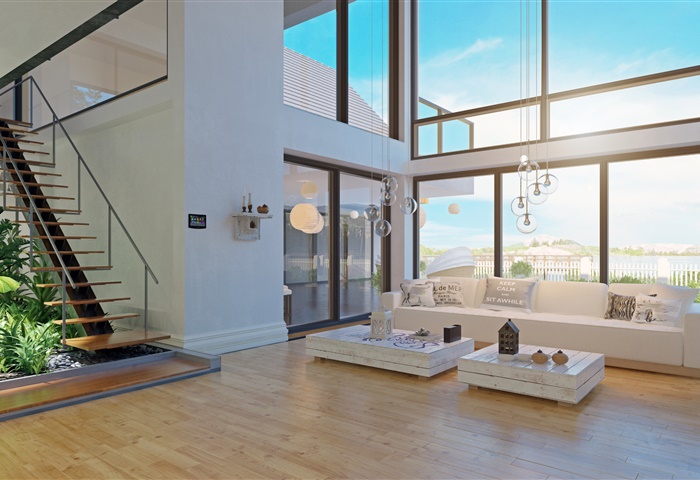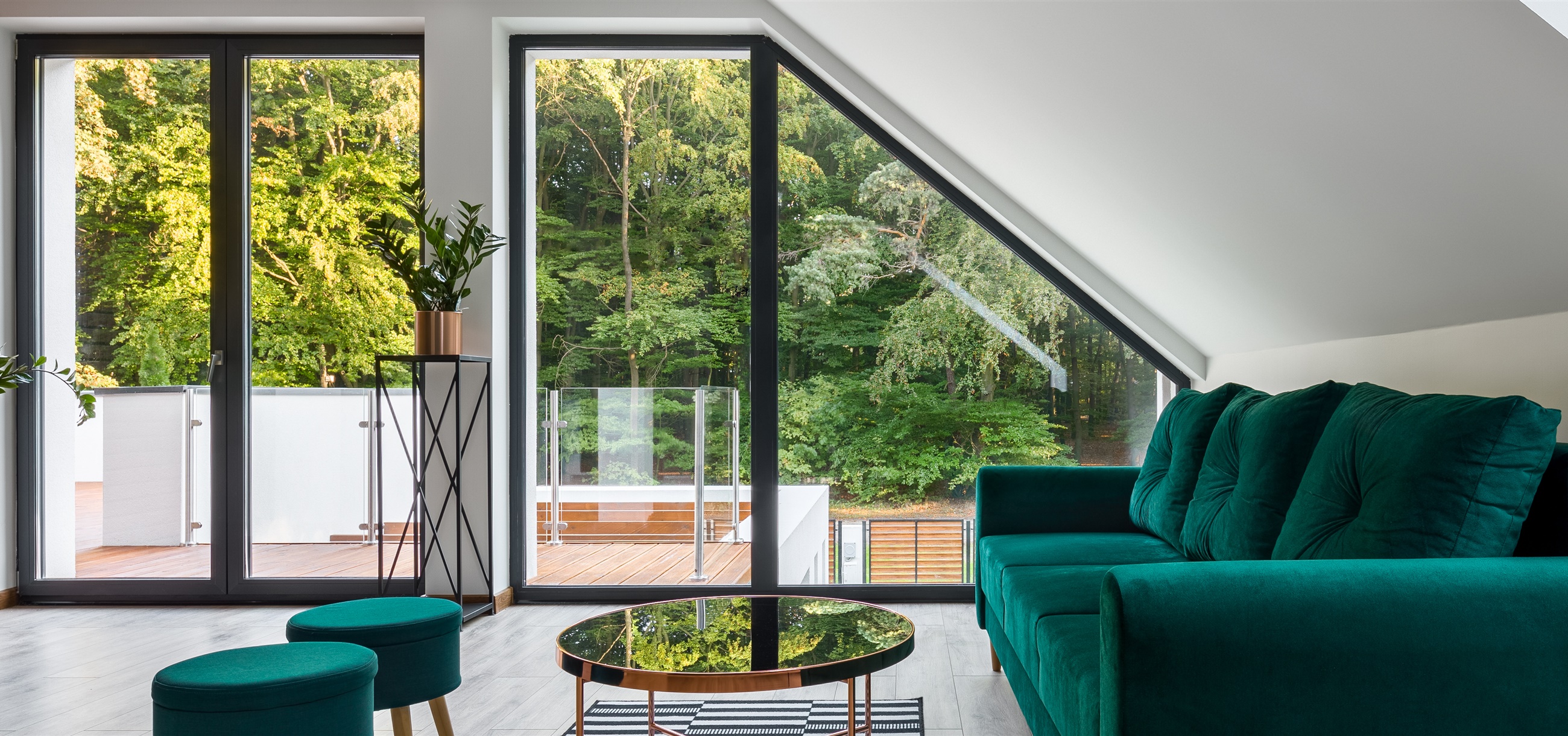
Interior Trends 2024
The year 2024 is the perfect moment to refresh your interiors and introduce new designs and ideas. The trends in interior design for this year are focused on creating cozy, colorful, durable, and eco-friendly spaces.
Colors of the Year 2024
In 2024, interior design will adopt new color schemes, introducing freshness and modernity into our homes. The dominant colors, which will significantly influence interior decor, are primarily shades of green, beiges, and accents of deep blue. These colors not only reflect contemporary design trends but also carry deeper meanings, affecting our well-being and emotions.
Green, recognized as the color of balance and harmony, aims to bring a sense of calm and relaxation into interiors. Shades such as mint or olive will be perfect for creating a peaceful oasis in bedrooms or living rooms. However, in 2024, emerald green will reign in the world of interior finishes. This elegant shade of green adds freshness and a luxurious character to interiors. It can be applied to walls, furniture, or accessories to give interiors a unique charm.
Meanwhile, beiges and other neutral colors aim to introduce warmth and naturalness into rooms, creating a cozy atmosphere conducive to rest.
Deep blue, in turn, will add elegance and depth to interiors. It is a color associated with strength and stability, perfect as an accent in minimalist arrangements. It can be used on walls, as the color of furniture, or in decorative accessories.
However, for these colors to fully influence our mood, the way they are applied is important. The key here is the combination of different shades and textures of materials, which will allow for the creation of multi-dimensional and interesting spaces. For example:
Using different shades of green can help visually enlarge a space.
Beiges and other neutral colors are best combined with natural wood or stone.
Deep blue pairs excellently with metallic accents in gold or silver.
It's also important to remember the right lighting, which can significantly affect the perception of colors. Natural light will enhance the brightness and depth of dominant colors, while properly selected artificial lighting can add warmth to the interior or create an intimate atmosphere.
Leading Materials in 2024 – Return to Nature
In 2024, trends in interior finishing focus on ecology, durability, and modernity. Among the most popular materials used in the arrangement of residential and commercial spaces, wood, natural stone, architectural concrete, and innovative composites are at the forefront. Each of these materials not only brings a unique character to the interior but also fulfills various functions, meeting the needs of contemporary users.
Wood remains at the top of preferences due to its natural beauty, warmth, and the ability to create a cozy atmosphere. It is versatile – fitting both classic and modern interiors. Wood is also valued for its ecological properties; it comes from renewable sources and is biodegradable. It finds applications in flooring, furniture, decorative elements, and as casings for electronic devices.
Natural stone, such as marble or granite, brings an element of luxury and elegance to interiors. It is characterized by high durability and resistance to damage. Stone is often chosen for bathroom and kitchen finishes (countertops, walls) and as a decorative element in living rooms. Its unique texture and coloration make every project unique.
Architectural concrete has gained popularity thanks to its minimalist aesthetic. It perfectly complements modern, loft spaces. Concrete is used not only as a structural material but also as a decorative element – in the form of walls, floors, or even furniture. Its advantages include high durability and ease of maintenance.
Innovative composites, such as silica surfaces or fiberglass panels, open new possibilities for interior designers. These materials are characterized by exceptional resistance to dirt, moisture, and mechanical damage. They are lightweight, easy to install, and available in a wide range of patterns and colors.
The choice of finishing materials in 2024 is dictated not only by aesthetic trends but also by the growing ecological awareness and the need to create functional spaces that will serve for years. Both wood, natural stone, architectural concrete, and innovative composites offer wide design possibilities, allowing for the creation of interiors with timeless charm and those reflecting the latest design trends.
Technological Innovations
Technological innovations in interior finishing promise breakthrough changes that could revolutionize how we perceive and design our living spaces. Leading these innovations is intelligent lighting, which adapts to our natural biological rhythms, improving well-being and efficiency. These systems, utilizing IoT (Internet of Things) technology, allow users to control the intensity and color of light via a mobile app or voice.
Another significant innovation is antiviral paint, containing silver particles capable of neutralizing viruses and bacteria on surfaces. The use of recycled materials is also increasing. Innovative approaches to recycling plastic and glass allow for the creation of durable and aesthetically pleasing building materials. As a result, designers can not only create beautiful spaces but also contribute to environmental protection.
Finally, the development of smart homes continues to expand, thanks to new voice or app-controlled devices. From automatic blinds and energy management systems to intelligent security systems - all of this contributes to the future home, which is not only beautiful but also functional and secure.
Sustainable Development and Ecology
The interest in ecological materials and practices stems from the growing social awareness regarding environmental protection and the endeavor to minimize the negative impact of human activity on the planet. In the context of interior finishing, ecology manifests through the choice of renewable, recyclable materials, and those that are produced in an ethical and sustainable manner.
Popular ecological materials used in interior design mainly include wood from certified sources, bamboo, which is considered a renewable resource due to its rapid regeneration, as well as natural stone and cork. Recycled materials, such as reclaimed wood or ceramic tiles made from recycling, are also increasingly used. These resources not only reduce the negative impact on the environment but also add a unique character to interiors.
Ecological practices in interior design involve not only the use of appropriate materials but also care for energy efficiency and waste minimization. LED lighting is standard due to its low energy consumption and long lifespan. Moreover, smart home systems, which allow for the optimization of energy usage, are gaining popularity.
The use of plants as a decorative element is another aspect of the ecological approach to interior design. Plants not only purify the air of harmful substances but also introduce natural harmony and peace into the rooms.


